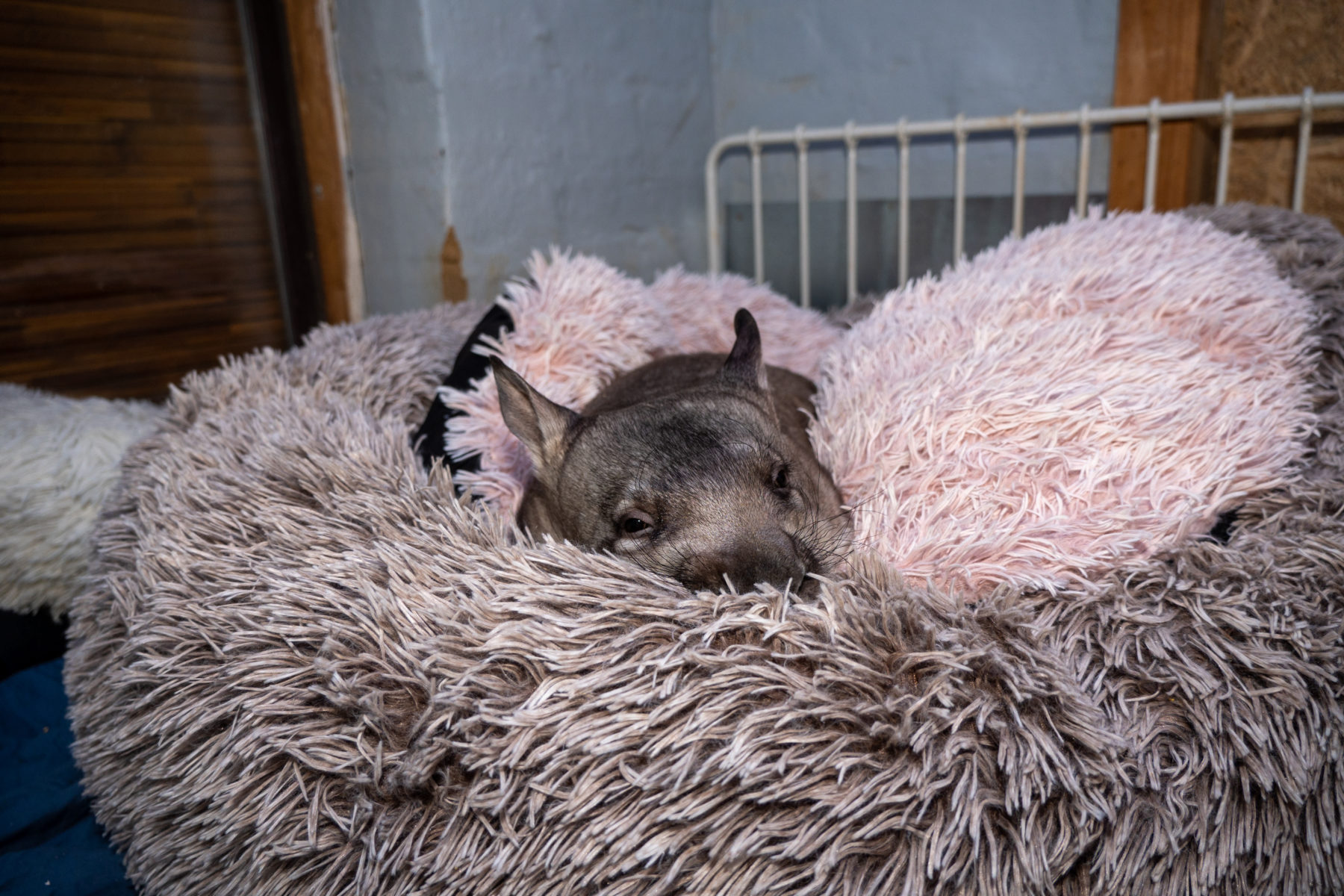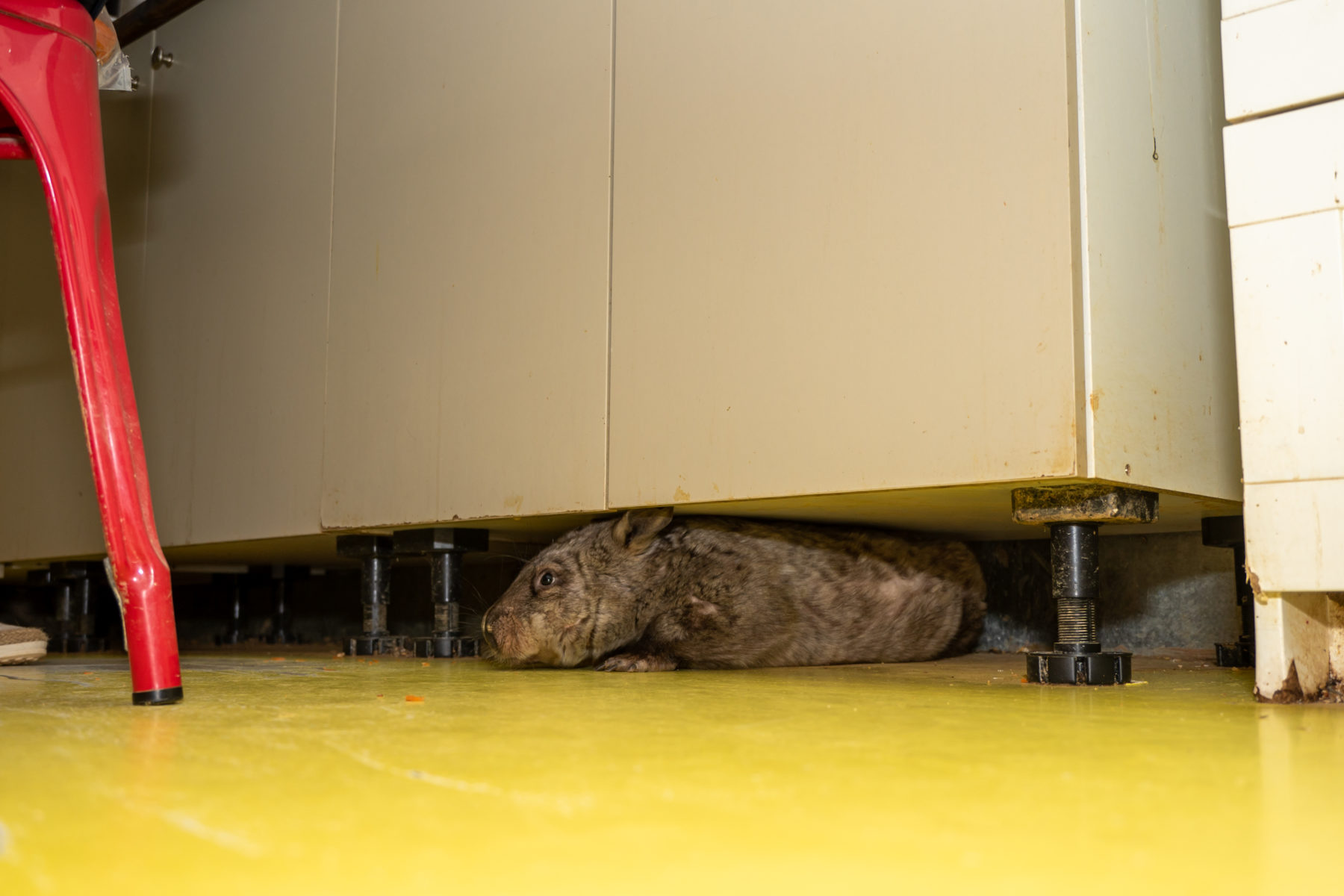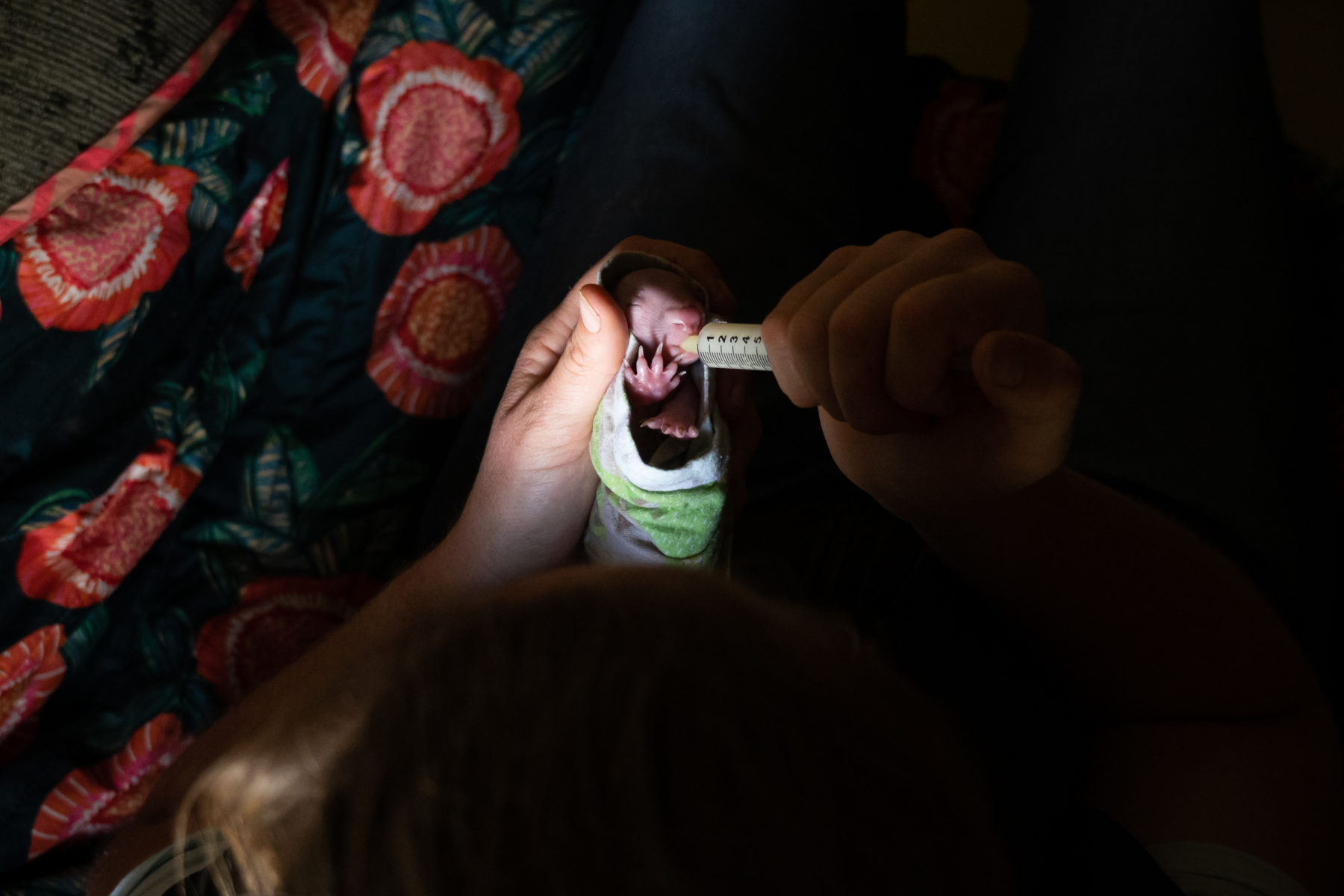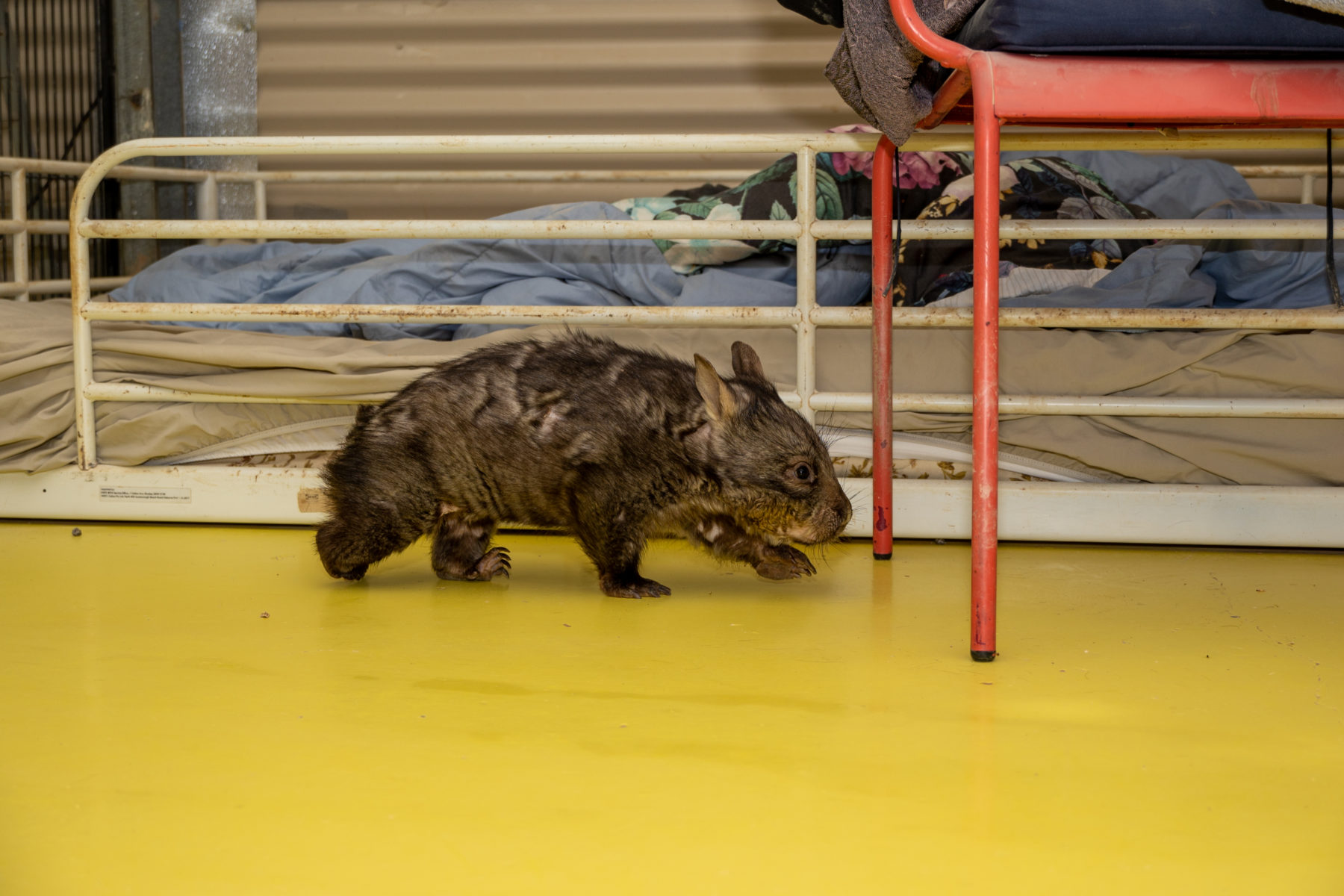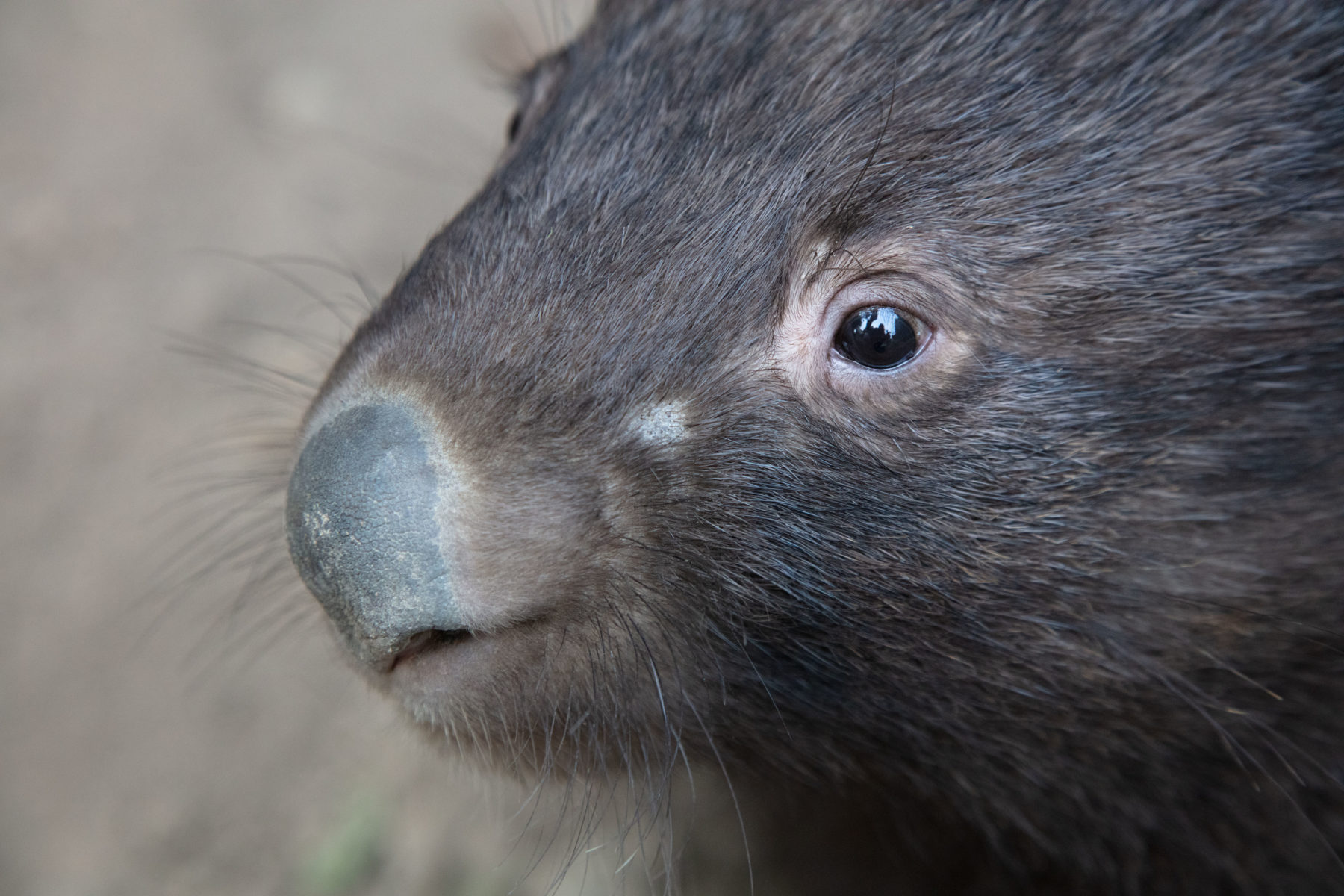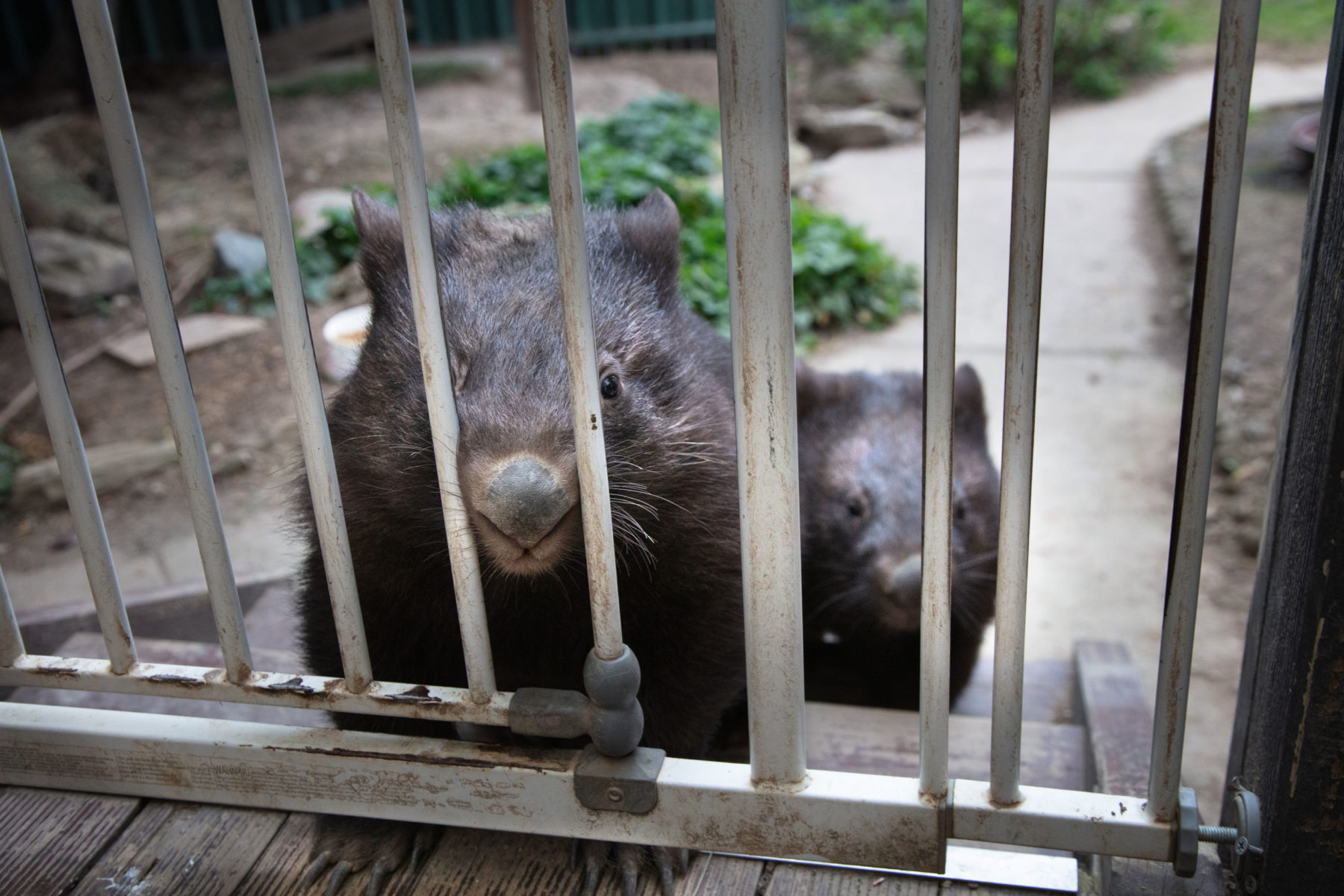It’s 2019, and Brigitte Stevens stands beside a nondescript road at twilight in South Australia’s Murray country. She’s here to rescue wombats that have been buried alive on public lands.
“This was deliberate, unfortunately,” she says. “I don’t know why they did it.”
Located on the edge of the road, the burrow was filled because of safety concerns. Initially, a one-way door was put in front of the burrow to try and trap the wombats.
“One-way doors are not successful in soft soil as the wombats simply dig around them,” says Brigitte.
Another burrow, away from the road, was also filled.
“I do not know if this one was filled in due to malice, but there was certainly no need for it,” she says.
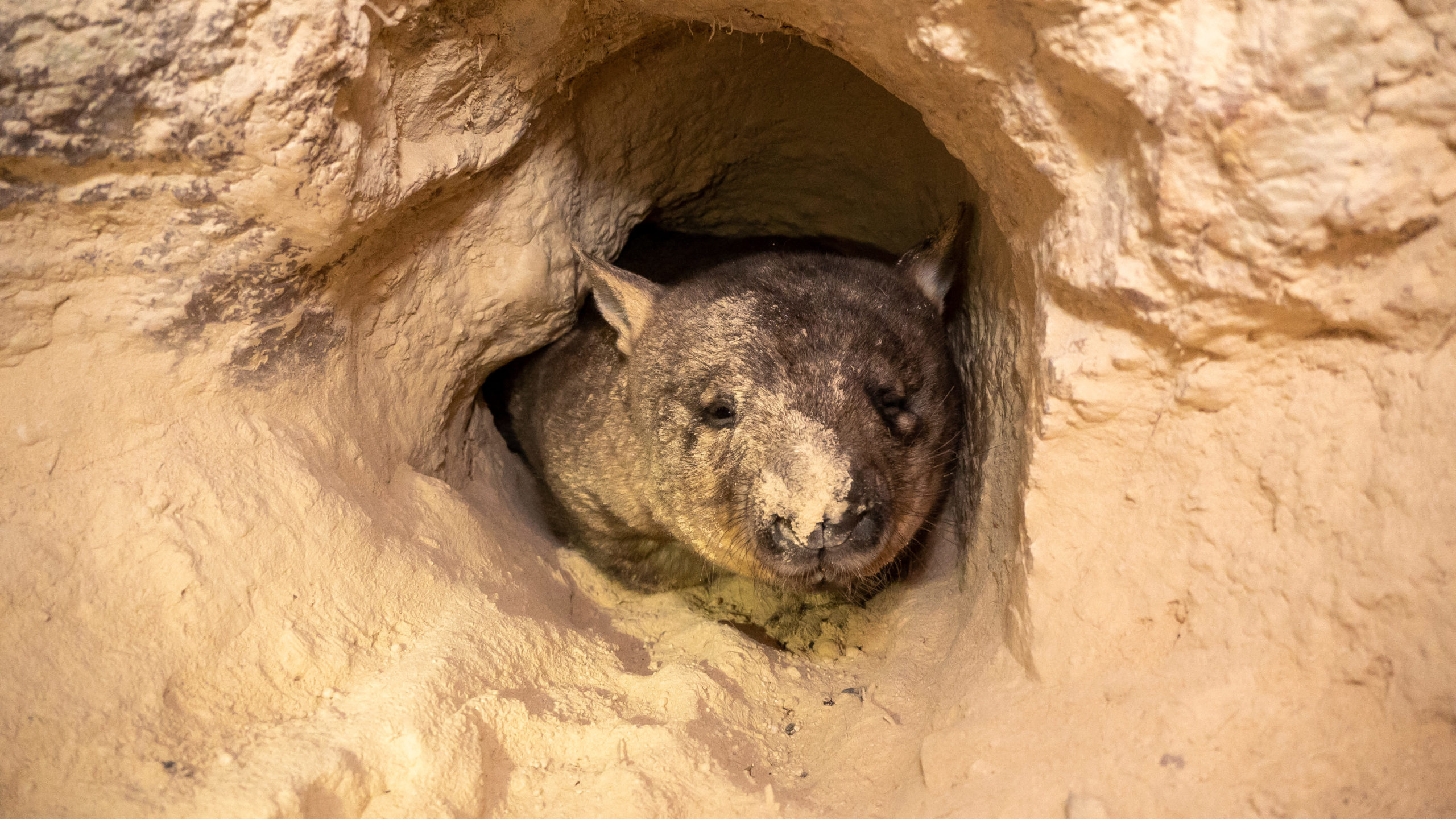
Out of her own pocket, Brigitte has hired a mini excavator to unearth the wombat burrows. She records the machinery in a 30-minute livestream to her Wombat Awareness Organisation Facebook page, which has a following of more than 200,000 people.
“Today is night four of them being buried alive. We can hear the wombats breathing and digging,” says Brigitte in the video. “We might get in trouble, but you know, what do you do? You can’t leave an animal buried alive.”
The machinery shifts through tonnes of red sand, creating a deep trench beside the road. As the evening lengthens, the entrance to a wombat burrow is revealed. Brigitte returns to the site the next day and spends six hours clearing away the displaced soil.
In South Australia, wombats are protected under the National Parks and Wildlife Act 1972. The penalty for killing a wombat without a permit is a $2500 fine or six months in prison. But they’re also considered an agricultural pest as their diggings wreck fences, damage machinery and compete for resources. You need a permit to cull them and must follow the humane code of practice. But destroying their burrows – which were unprotected until September 2022 – provided a convenient legislative loophole.
“They use heavy machinery to completely collapse and destroy the burrows,” says Brigitte. “I’m talking about tonnes and tonnes of soil that have been collapsed and filled back in. When you go out there it’s completely flat, there’s no indication whatsoever that there have been burrows there.”
Brigitte conservatively estimates that hundreds of wombats are buried alive each year, but believes that the figure is more likely in the thousands. She says it takes about 21 days for the buried wombats to die.
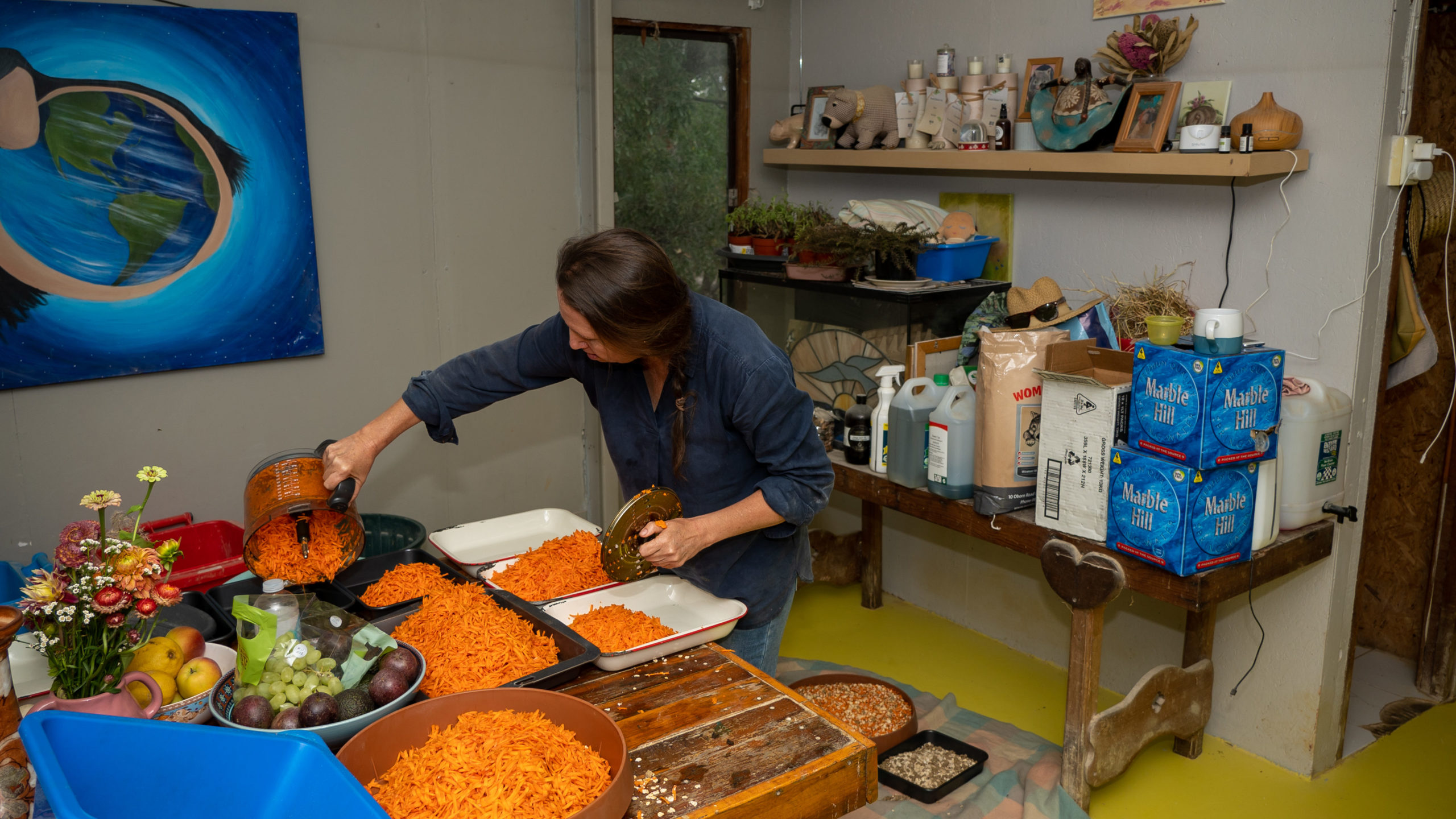
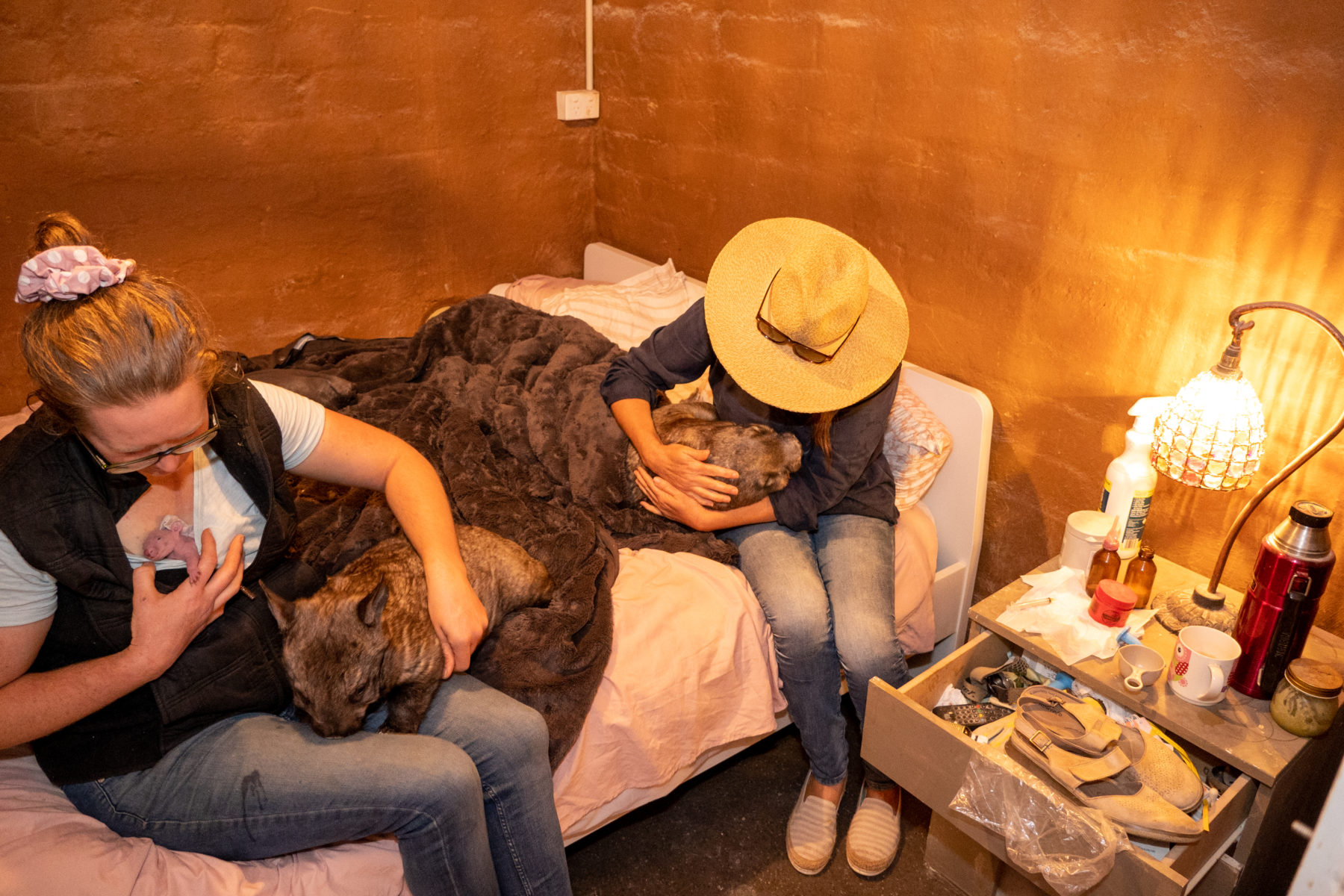
Brigitte founded the Wombat Awareness Organisation in 2006. After years of campaigning, the bill to protect wombat burrows was passed in South Australian parliament in September 2022. Introduced by Greens MP Tammy Franks, it’s now an offence to destroy, damage or disturb a wombat burrow, with a maximum penalty of a $5000 fine or imprisonment for 12 months.
Brigitte’s not-for-profit charity, which specialises in wombat advocacy, rescue and rehabilitation, has saved more than 10,000 wombats since its creation. It offers a 24-hour rescue service all over the state and supports more than 1800 wombats every year.
Brigitte lives on site at the sanctuary, which accommodates up to 90 wombats at a time. The wombats are here because they’ve been hit by cars or impacted by hunting and starvation. There’s even a designated area for “special needs” wombats, from seniors to those that have been hit by cars and have some degree of brain damage.
Living on-site at the sanctuary means constant work, from food preparation, administering medicines and property maintenance. From the moment Brigitte wakes up to the moment she goes to bed, it’s round-the-clock wombat care. But Brigitte wouldn’t have it any other way.
“Wombats are the most trusting, gentle, affectionate and loving little animals,” she says. “Even adults that we get straight from the wild will start holding your finger and holding your hand the moment you wrap them in a blanket and start syringe feeding them. I love it, it brings me immense joy. I wouldn’t want to do anything else.”
In Far East Gippsland, Victoria, Emily Small is caring for an orphaned wombat whose mother was shot in a nearby farming town. At just under 3kg, Emily estimates the joey is roughly 8–9 months old.
“I’d love for people to just explore every other option before killing the mum,” she says. “This is time consuming for me, and effort, and money, which is just unnecessary.”
Emily and her mum, Sharon Small, started fostering wombats nearly 20 years ago, when a wombat was killed, with a young joey in her pouch, by a car outside their driveway. Always interested in caring for wombats, Sharon took the small marsupial to the nearest wombat carer who mentored them in wildlife care. Today, Emily and her mum are authorised wildlife shelter operators by the Victorian Department of Environment, Land, Water and Planning. Together they run the Goongerah Wombat Orphanage.
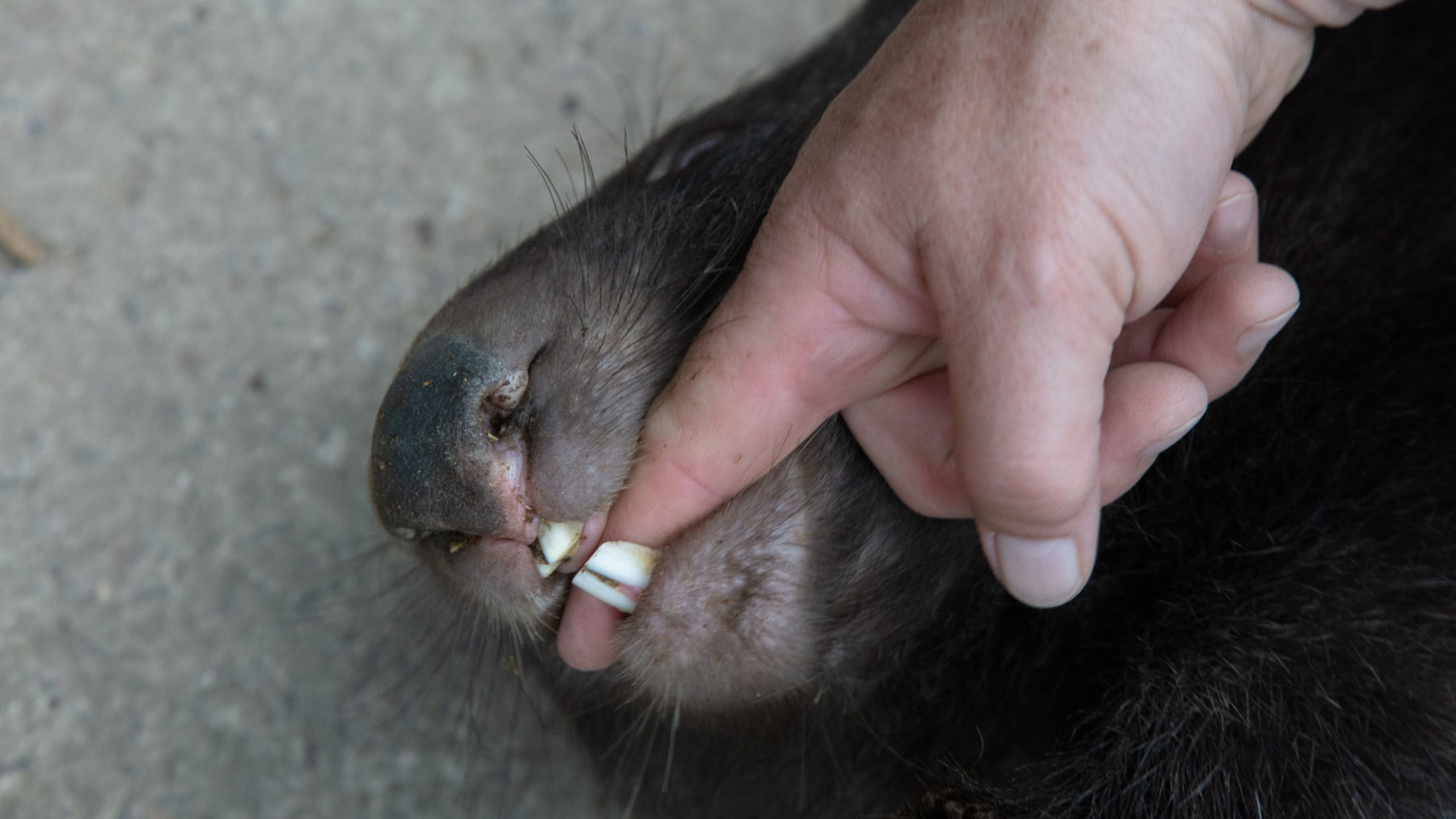
Emily is currently caring for two joeys, but there’s another four wombats in an enclosure outside. Aged approximately 12–18 months, most of these wombats were orphaned by car strikes. Affectionate and sociable, they look to Emily as a mother figure.
“Wombats have a really strong bond with their mum in the wild, so I need to replicate that enough to give them that security and reassurance,” says Emily. “My favourite part of the morning is feeding these four and hanging out in the sunshine. They climb all over me and cuddle.”
When they get a bit older, the wombats will be moved outside to the wombat day care. Some of these adults will eventually be released from the property, but many continue to visit the sanctuary at night. The Goongerah Wombat Orphanage continues to support these wombats by checking on them, feeding them and treating any injuries they might have.
Emily used to work full-time in Melbourne, but she’s recently returned to Goongerah so she can take on more responsibility at the orphanage. In 2020, she featured in an Australian Geographic online feature about caring for wombats in her apartment during lockdown.
“I was working at Wildlife Victoria at the time, and then it was lockdown,” says Emily. “But it was actually lovely, I absolutely loved it. Normally I’m living a full life, plus there’s wombats on me. It was nice to not have to travel with them or worry about leaving them when I’m going off to work.”
One of the wombats in the feature, Bronson, died last year from gut health complications. But Landon is still at large, roaming the wilderness near her sanctuary, although Emily admits she hasn’t seen him for a while.
“I used to see Landon quite a bit, but he doesn’t come back anymore,” says Emily. “He was a really nice boy, so I think some of the nasty boys have pushed him out. [Wombats can be] very territorial.”
To date, Emily estimates she has fostered around 200 orphaned wombats. Vehicle collisions are the main reasons the joeys are orphaned, but many have also been affected by hunting culls.
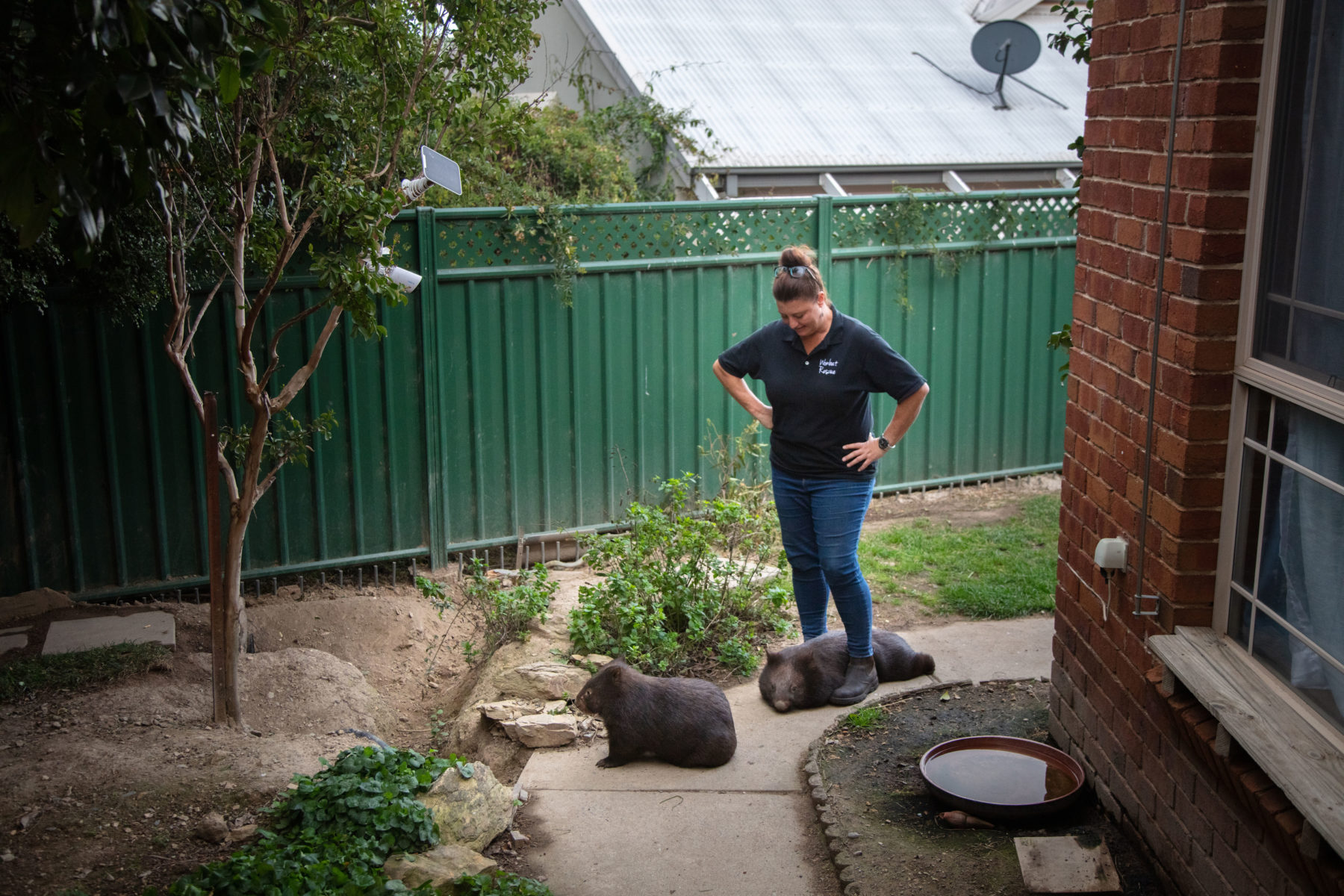
Until recently, wombats in Victoria were classified as a ‘noxious species’ and were unprotected in the Wildlife Act 1975. In 1984, an Order in Council “unprotected” wombats across 193 parishes in eastern Victoria, allowing landowners or occupiers engaged in rural production to destroy wombats without needing to obtain authorisation. This order remained in place until this decade, when a wombat hunting lodge for international tourists and Chinese high rollers was exposed in Murrindindi. In the wake of the scandal, the order was revoked on 6 February 2020. Landowners wanting to cull wombats must now apply for an Authority to Control Wildlife (ATCW), under section 28A of the Wildlife Act 1975.
For the last six years, Yolandi Vermaak has dedicated herself to preserving the Australian Capital Territory’s wombat population from sarcoptic mange. As the founder of Wombat Rescue, she spends her Sunday mornings out in the field with her team of volunteers, installing burrow flaps filled with medicine. Each individual wombat burrow, the number of doses they’ve had, and the date of their next dose is logged on a spreadsheet.
“We’ve got about 45 wild wombats being treated for mange at the moment,” Yolandi says. “It’s an enormous, time-intensive process to go out and do all this.”
Mange is caused by a parasitic mite called Sarcoptes scabiei, which was introduced into Australian ecosystems by domesticated animals during European settlement. In the last 200 years, mange has gradually rolled out across Australia, reducing wombat populations across both the mainland and in Tasmania. The nocturnal lifestyle of wombats and their underground burrows make them the perfect host for this parasitic mite.
“The temperature and humidity [of a wombat burrow] is perfect for the mites, they can survive in the burrow without a host for three weeks,” says Yolandi. “Wombats are also nocturnal; they rarely see sunlight to kill this mite, so the mite load wombats carry is just so much more than, say, a kangaroo.”
This parasitic mite causes an infestation by burrowing under the skin. Over time, the skin forms a thick crust that looks like scabs and ridges across the body, prompting wombats to continuously scratch and itch. When these plaques dry and split open, the wounds become infected and flyblown. It’s a slow, agonising death, and wombats usually succumb to secondary problems such as organ failure, infection and even exposure.
“I don’t think there’s any other animal in Australia that is suffering physically as much as wombats are,” says Yolandi. “From an animal welfare perspective, I don’t understand why we’re not intervening. [In advanced cases] it looks like they’re covered in cement; that’s just how much they are suffering.”
The wombats are treated with Cydectin, a cattle drench that was approved by the Australian Pesticides and Veterinary Medicines Authority (APVMA) for off-label use on wombats. The medicine, which is administered weekly, works by being absorbed into the wombat’s bloodstream and killing the mites from the inside. Although the skin starts healing once the mites are killed, wombats remain vulnerable once the plaques loosen and fall off. Yolandi says that this past winter, a wild wombat she had treated died from hypothermia.
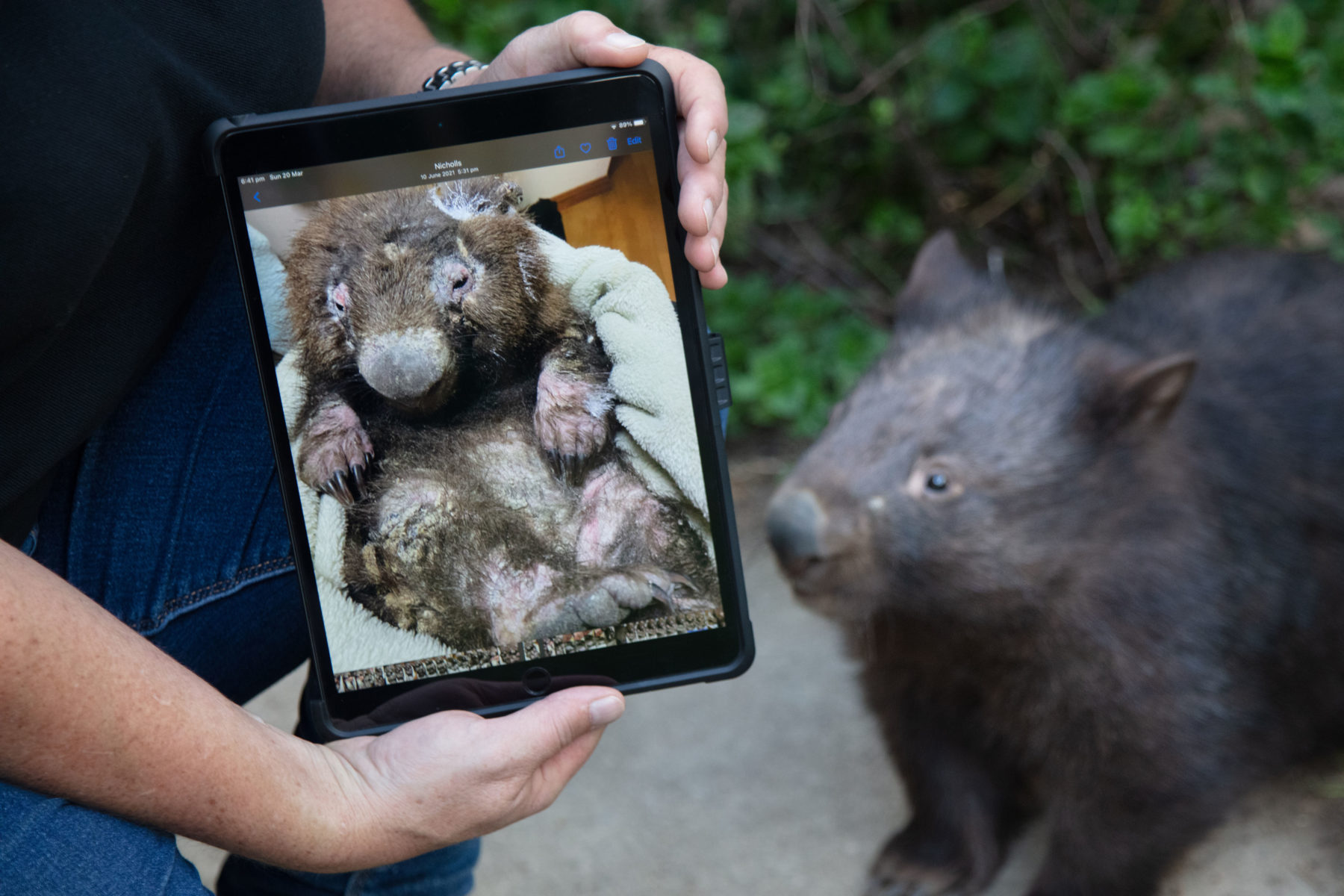
Yolandi is seeking greater urgency in the treatment of mange throughout wombat populations. With her Wombat Rescue organisation, she’s on the frontline of wombat conservation and mange education within the ACT and NSW. Alongside raising awareness of mange and treatment, Yolandi provides road rescues to wombats that have been injured or orphaned by vehicles.
Yolandi is currently caring for four wombats at her home in the Canberra suburbs. At 25kg, wombats Ray and Gemma are almost ready to be released back into the wild. Both came to Yolandi as joeys, severely emaciated and with advanced cases of mange. Yolandi nursed them back to health. She also has two joeys that were orphaned by car strikes. These youngsters require more human interaction than the older ones, including time for play.
“When they are in care with us, their personalities come to light,” says Yolandi. “They’re very distinct from each other. Wombats are such underrated creatures. I think they’re the underdog here in Australia.”

